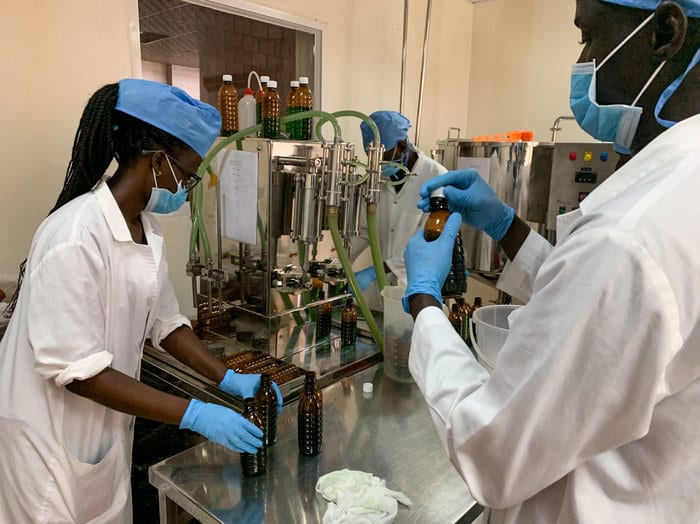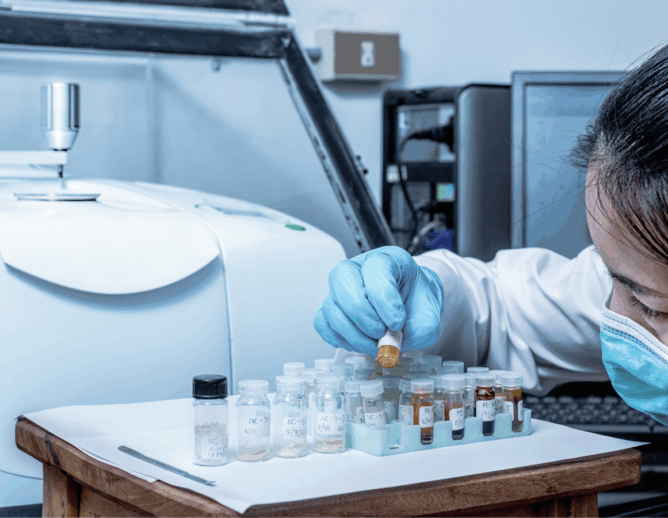
Health workers in Uganda prepare liquid morphine. Image courtesy of NPR.
The nature of life is that we all have to die at some point, but we don’t all have to suffer in dying. We can stave off death for only so long, but we can do far more to mitigate, if not eliminate, the pain that comes at this defining moment of our lives.
Yet what a low priority palliative care is on the global health agenda, even as it can eliminate or mitigate the pain and other suffering that often accompanies life-threatening diseases and dying, and can enable people to experience a “good death.” It is, for example, absent from the Sustainable Development Goals (SDGs), other than being implicitly included as part of SDG target on universal health coverage. (The World Health Organization [WHO] defines universal health coverage to include palliative care.) According to WHO, a mere 14% of people around the world who require palliative care – about 40 million people very year – receive it. Most people – 83% in 2011 – live in countries with “low to non-existent access to opioid pain relief.”
Let us look at that last point – pain relief, an essential component of palliative care, even as palliative care extends far beyond pain relief to also encompass relieving psychological, social, and even spiritual suffering. A 2017 Lancet Commission reported that the cost of providing everyone – everyone – who needs morphine-equivalent opioids would be $145 million per year, using the lowest available retail prices in high-income countries (the figure includes only medicine costs, not associated health system costs). I expect there are very few other ways that $145 million could relieve such great suffering of so many people – the tens of millions of people who need this medicine but do not get it, and family and friends who must see their loved ones, often in their final stages, in such agony. And yet, we don’t do it.
And it could be cheaper still. In Uganda, and now other African countries, liquid morphine provides an inexpensive alternative to other morphine formulations or opioids. Liquid morphine is inexpensive morphine powder mixed with boiled, filtered water, with careful measuring to ensure accurate dosage. For an average patient, a week’s dose costs only $2.50.
With leadership from Hospice Africa Uganda and in collaboration with the Ugandan ministry of health, liquid morphine was first used in Uganda in 1993, bringing relief to a 7-year-old boy with cancer in multiple sites, the pain of recovering from skin grafts following a partial arm amputation that was treatment for a rare bone cancer, and malaria. “[H]e died a happy child and at peace,” and home with his family.
The real breakthroughs in Uganda came in 2004 and 2005. First, legislation permitted nurses to prescribe the liquid morphine, rather than only doctors, impractical in a country with a severe shortage of health workers. Next, the government decided to cover the cost of the drug. In a country where earlier only a miniscule number of patients were able to receive pain relief, in a year, 11% had their suffering relieved.
That, of course, remains a tiny proportion of those in need. And little has changed since then. Lack of money, including for hiring more health workers and training and deploying nurses who can prescribe liquid morphine, are key obstacles. In 2016, the Ugandan government spent all of about US $6 per capita on health ($8 per capita according to Uganda’s government. (Only about 15% of the $51 per capita spent on health in Uganda in 2015/16 came from the Ugandan government; the rest is about event split between external partners [~42%] and private expenditures [~43%].)
Some countries – about 20 in all, by one estimate, including in Africa, Asia, and Latin America – have also begun to use liquid morphine for pain relief, yet even in these countries, the medicine “is often available only through hospitals in” capital cities.
This is a travesty. Along with being quite inexpensive, liquid morphine does not even raise concerns of addiction that exist with other opioids. Because of the dilution, getting high would require drinking gallons of the morphine solution – itself “bitter” and “slightly nauseating.”
You might think of liquid morphine, and inexpensive morphine-equivalent opioids more broadly, as the Vitamin A of palliative care. Vitamin A supplementation is only a very discrete, targeted solution to malnutrition, which extends far beyond the question of a single vitamin, and implicates our entire food system. Yet along with protecting children from blindness, it reduces child mortality by 12–24%, as it decreases risks from diseases like measles and diarrhea.
Likewise, what a difference it would make to those needing palliative care if government-funded (i.e., free to patients) liquid morphine (or morphine-equivalent opioids) were made available through national financing, with support from development assistance as needed, and laws and regulations changed to allow nurses to provide this medication.
Yes, it is more complex than this. Not everyone in need will receive the medication until health systems are better funded and stronger, including having enough health workers. And ensuring strong health systems, too, is a necessary task.
Yet universal availability of liquid morphine would make a world of difference for millions of people experiencing severe – and avoidable – pain. And for those whom medical science cannot save, like that 7-year-old-boy in Uganda, their lives will end in peace, rather than in cries of agony.



